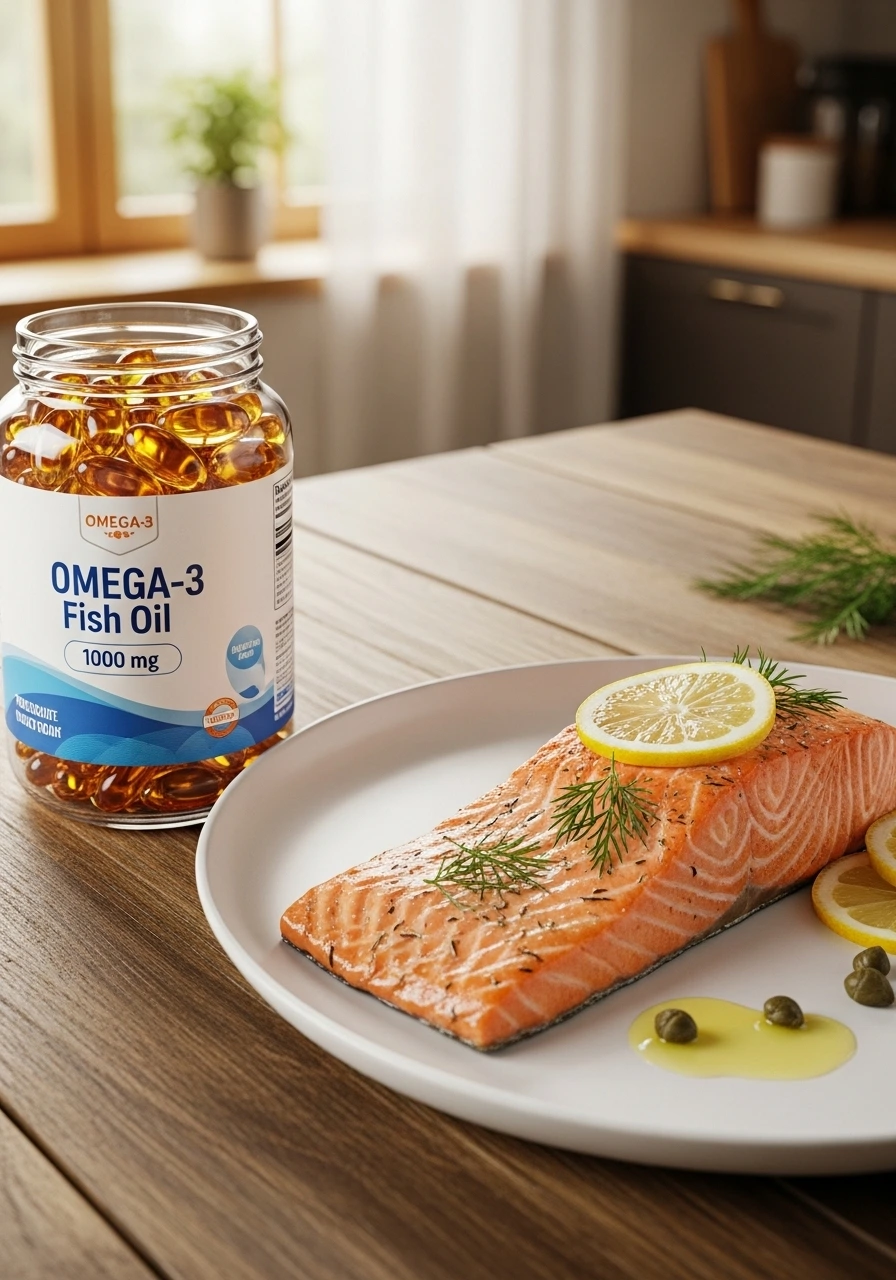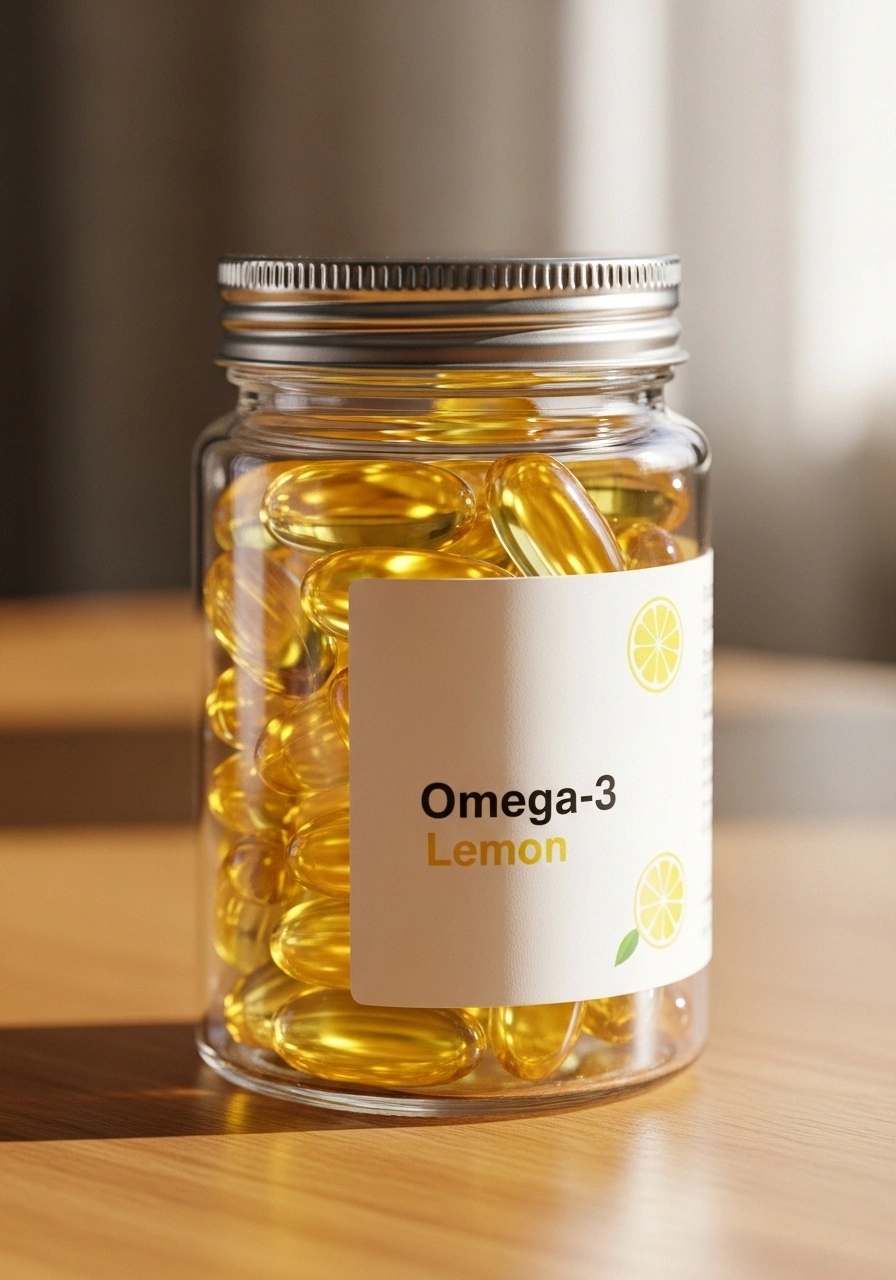

Introduction: Why You Should Pay Attention to the Form of Omega-3
Omega-3 fatty acids (EPA and DHA) are among the most studied nutrients for heart, brain, vision, and inflammatory health.
But not all omega-3s are the same: the form in which they are delivered in supplements affects absorption, effectiveness, and tolerability.

At Vitafoods Europe 2025, one of the key topics was the comparison of ethyl esters (EE) and triglycerides (TG) omega-3, as well as new technologies — re-esterified triglycerides (rTG) and phospholipid forms (from krill).
Main Forms of Omega-3 in Supplements
-
Ethyl Esters (EE) — omega-3 bound to ethanol. This form is often used in highly concentrated pharmaceutical products. Requires the lipase enzyme for hydrolysis before absorption.
-
Triglycerides (TG) — the natural form found in fish. Contain three fatty acids bound to glycerol. Well absorbed, especially with meals containing fat.
-
Re-esterified Triglycerides (rTG) — purified and reformed into TG after concentration, combining high concentration with better bioavailability.
-
Phospholipids (from krill) — EPA and DHA bound to phospholipids, highly bioavailable even without fat-containing food.
📌 Dyerberg et al. (2010) showed that rTG and phospholipid forms have 40–50% higher bioavailability compared to EE at the same dose.
Table 1. Comparison of Omega-3 Forms
| Form | Bioavailability | EPA+DHA Concentration | Features |
|---|---|---|---|
| EE | Medium | High (up to 90%) | Should be taken with fatty food |
| TG | High | Medium (30–60%) | Natural form, from fish |
| rTG | Very high | High (up to 90%) | Better absorption at high concentration |
| Phospholipids | Very high | Medium (20–50%) | Also support cell membranes |

How to Choose Omega-3
-
If high concentration is important — EE or rTG.
-
If priority is maximum absorption — rTG or phospholipids.
-
For children and people with sensitive stomachs — TG or phospholipids.
-
For therapeutic doses (>2 g/day EPA+DHA) — EE or rTG pharmaceutical products under medical supervision.

Table 2. Recommended EPA+DHA doses
| Indication | Dose (EPA+DHA) | Note |
|---|---|---|
| Heart health support | 500–1000 mg/day | Preferably TG or rTG |
| Cognitive support | 1000–1500 mg/day | rTG or phospholipids |
| Inflammatory processes, joints | 2000–3000 mg/day | EE or rTG under medical supervision |
| During pregnancy | 500–1000 mg/day DHA | TG or phospholipids, with focus on DHA |
Practical Tips from Vitafoods
-
Microencapsulation — modern technology that reduces fish odor and improves omega-3 stability.
-
Combinations: omega-3 + vitamin D3 are common in children’s and adult formulas.
-
Sensory: trend toward soft gel capsules with natural lemon or mint flavors.
Cautions
-
Excessive intake (>3 g/day EPA+DHA) may increase bleeding risk in people taking anticoagulants.
-
Omega-3s do not replace a balanced diet — they only complement it.
References
-
Dyerberg J. et al. “Bioavailability of marine n-3 fatty acid formulations.” Prostaglandins Leukot Essent Fatty Acids. 2010.
-
Neubronner J. et al. “Enhanced increase of omega-3 index in response to long-term n-3 fatty acid supplementation from triacylglycerides versus ethyl esters.” Eur J Clin Nutr. 2011.
-
Yurko-Mauro K. et al. “Beneficial effects of docosahexaenoic acid on cognition in age-related cognitive decline.” Alzheimers Dement. 2010.




